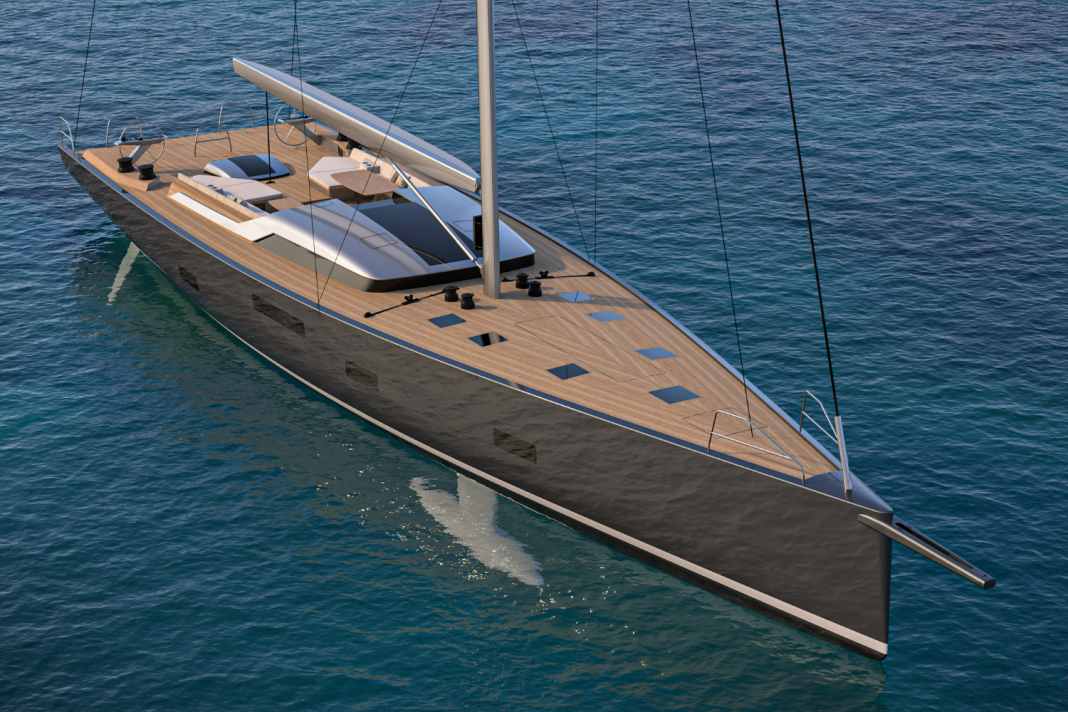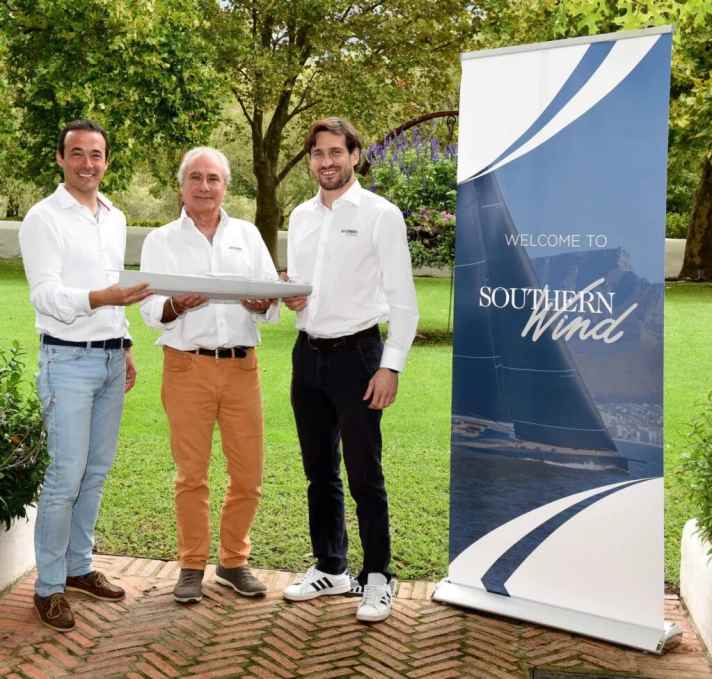





This time more series than custom. Most recently, Southern Wind sounded out the fourth SW96 "Nyumba GT" the limits of platform construction. And with the first SW108, an equally highly customised carbon slup with hybrid drive is currently being created. The Italian-based marketing and sales team calls this co-operative yacht-building method Smart Custom, which goes far beyond pre-configuration and is based solely on a fixed hull shape. For the more standardised SW100X, the US designers from Farr Yacht Design and the Milan-based Nauta designers were once again brought together. The 100-foot size has a special significance for the shipyard, which was founded by Italian Willy Persico in Cape Town in the early 1990s: 13 units of the original SW100 model were delivered between 2006 and 2011. The development work carried out by the current CEO and long-standing technical director Marco Alberti and his team was correspondingly high. CCO Andrea Micheli puts it like this: "It's like Porsche launching a new 911 on the market."
Continuation of a legendary mini-series
For a new-generation Southern Wind, the superstructure is extremely striking - not a flounder, but not a deckhouse either. Something in between. In fact, the biggest innovation is hidden in the stern. The SW100X is almost seven metres wider on deck and, in line with the trend, significantly narrower underwater than the latest Farr designs. This results in a large working cockpit and widely spaced steering columns at quadrant level, each of which is connected to the wheels via two pulleys. The overhanging end allows for a bathing platform that folds down hydraulically in two parts and creates a 20 square metre beach club area on two levels. In addition, the tender (Williams 435) is now positioned transversely under the sunbathing areas and close to the transom. This allows the crew areas to move further aft and provides more space in front for guests. However, BOOTE EXCLUSIV did not find out how the cover of the dinghy garage gets from the deck to the platform during the shipyard visit in South Africa. Marco Alberti only revealed that this will not be done by hand. The backstays prevent it from being opened sideways.
There are three drive options to choose from: Twice over the shaft, with diesel engine or electric motor, controllable pitch propeller and variable speed diesel generators. The latter makes it possible to generate electricity under sail. The hybrid system developed with BAE Systems and tried and tested in transport buses around the world provided "Nyumba GT" with an energy yield of 15 kilowatts at a boat speed of 11.5 knots during initial tests in Table Bay. On request, Southern Wind can also fit two saildrives in the hull, which is created using a vacuum infusion process perfected over the years with carbon fibre mats and fabrics as well as various epoxy resins.
Lean decision-making processes
The fact that the SW100X is expected to have a displacement of almost 67 tonnes will also be due to the interior, which is not as consistently geared towards lightweight construction as that of the smart custom builds, where cabinet doors also have a large foam core and are only reinforced at certain points for hinges. The built-in furniture should be immovable in terms of position and shape, and Nauta Design will specify various moods for the decoration. Micheli emphasises that it was important to have two double cabins close together in front of and behind the saloon in order to be able to offer equivalent accommodation for two families, for example in charter operations.
There are two keels to choose from: fixed and telescopic. What may seem surprising at first makes perfect sense. The 3.65 metre to 5.60 metre deep telescopic keel is more expensive and slightly less powerful than a lift keel due to the thicker fin profile, but like the fixed four-metre keel, it does not affect the interior. The layout therefore does not need to be adapted to suit the keel's flavour. The righting moment is lower than with the upcoming Smart Custom deliveries, whose masts also reach higher. Nevertheless, the Farr designers achieved a high degree of efficiency thanks to the low wetted surface of the underwater hull. The motto is: smaller sail plan, lighter rig, less ballast, less displacement. The polar diagrams predict that the SW100X should be faster than the wind from six knots upwind and minimally faster than the wind at twelve knots of true wind. The new 100-footer should work everywhere and in all conditions and, as a representative of the old model series demonstrated in 2007, break the 30-knot mark.
Construction of the three-part hull form, which is not actually CNC-milled but is created with the help of mould templates from the three-axis milling machine and on the basis of a wooden framework, is due to start in the spring. Nevertheless, the South African yacht builders are regularly recognised by experts and classification societies for their high level of manufacturing precision. For the SW100X, Southern Wind promises a reduced construction time of 18 months due to standardisation. Construction number one is scheduled to sail through Table Bay in early 2025.


